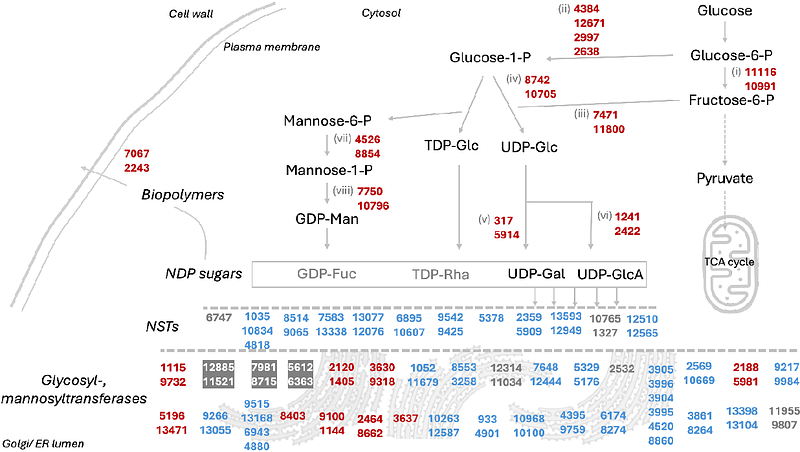Acidification by nitrogen metabolism triggers extracellular biopolymer production in an oleaginous yeast

Acidification by nitrogen metabolism triggers extracellular biopolymer production in an oleaginous yeast
Sepulveda Del Rio Hamacek, H.; Tingajeva, O.; Ostertag, K.; Rekena, A.; Illarionov, A.; Joul, P.; Monteiro de Oliveira, P.; de La Caridad Martin-Hernandez, G.; Müller, B.; Bonturi, N.; Passoth, V.; Lahtvee, P.-J.; Kumar, R.
AbstractThe oleaginous yeast Rhodotorula toruloides is a natural producer of lipids and carotenoids. However, its potential as a producer of extracellular biopolymers remains unexplored. Hence, we aimed to evaluate the R. toruloides CCT0783 for extracellular biopolymer production. We found that the carbon-to-nitrogen ratio influenced exopolysaccharide (EPS) production, reaching 5.84 {+/-} 0.45 g/L under glucose-rich conditions. We characterized the crude biopolymer using FTIR and GC-MS, identifying polysaccharide peaks, wherein EPS consisted of (%) glucose (88.83 {+/-} 4.87), galactose (5.50 {+/-} 1.50), mannose (4.80 {+/-} 1.57), and xylose and arabinose (0.87 {+/-} 0.04) monomers. The dried EPS also contained a fractional presence of protein (1.0%). Interestingly, inorganic, but not organic, nitrogen metabolism was associated with the acidification of the culture environment and simultaneous EPS production. A comparison between non-buffered and buffered media indicated that EPS was produced when the final pH was around or below 2, which was observed in the former but not in the latter. Finally, a comparative bioinformatics analysis allowed us to map a putative EPS biosynthesis and transport pathways, as well as regulators of intracellular pH maintenance. In conclusion, our study demonstrates R. toruloides\' potential as an extracellular microbial biopolymer producer, enabling its development as a cell factory.